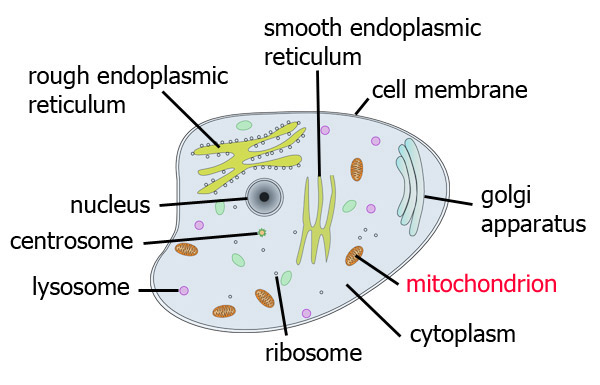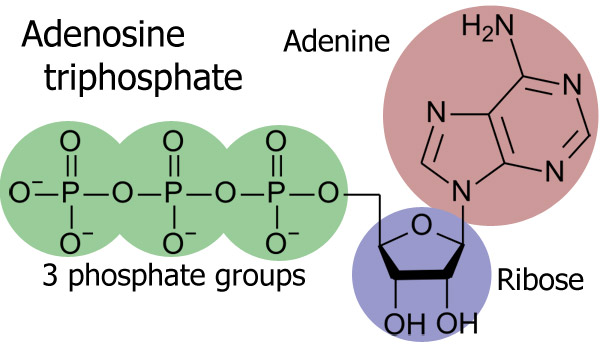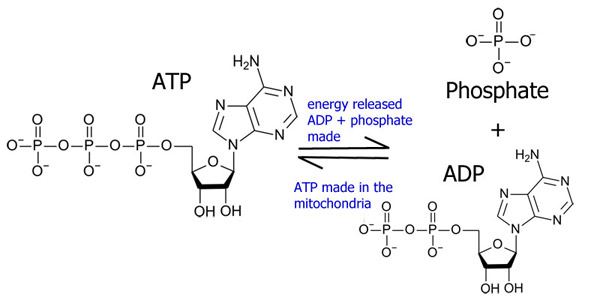Cellular Respiration
The release
of energy from food within cells
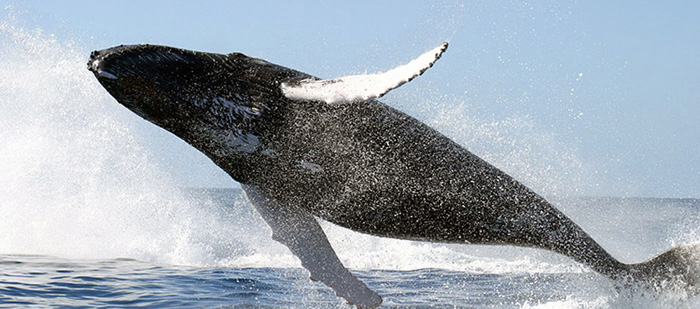
Humpback whale - Every cell of this 30 tonne whale is respiring all the time, coming up for air it first blows out the carbon dioxide enriched air from its lungs, before sucking in fresh air loaded with oxygen to be dissolved in the blood and pumped to even the most remote and distant cells where it is used to release the chemical energy in the food the whale eats.
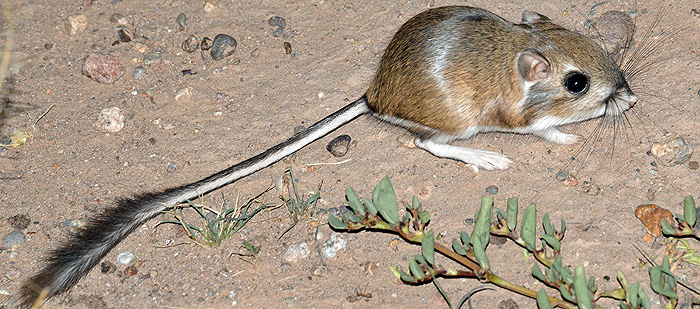
Kangaroo rat -
A number of species of the genus Dipodomys live
in North America and hop like a kangaroo. They obtain much of
their water by the breakdown of their food during respiration,
meaning they don't have to drink, this metabolic water
supplemented by water already in their food supplies
all of their needs.
Picture - Bcexp - used under CC4 Attribution Share Alike International license
There are two common and correct meanings of respiration in biology:
-
1 - Cellular Respiration which is the process whereby energy is released from food molecules within cells in a form that the cell can use for its activities, this usually requires oxygen and produces carbon dioxide. Cellular respiration is required for the continued life of all cells, plant, animal, bacterial etc.
-
2 - Physiological Respiration which is the transport of oxygen from the surrounding medium (air or water usually) to the body cells and then the transport of carbon dioxide in the opposite direction.
Respiration is NOT breathing, to help make this more difficult to learn we call our breathing apparatus our respiratory system :o). While the respiratory system is involved in respiration (by getting oxygen in and carbon dioxide out of the body) respiration is not breathing (which is properly called ventilation).
1 - Cellular Respiration
Food + Oxygen > Water + Carbon dioxide + Energy
The process whereby the energy in food is turned into a form that our body can use more easily.
The food that comes into our body comes in a huge range of forms, of different carbohydrates, fats, oils and proteins all of which we can use for energy. This gives a problem to be overcome as there is a lot of variety in the kind of fuel available. Our body takes these various high energy but quite awkward to use molecules and turns them into something that every cell can use easily.
Most things in modern society run on electricity (bear with me, I didn't just accidentally cut and paste). We make that electricity by a whole range of means, burning coal, oil or gas, from water power behind high dams, wind power, nuclear, wave power etc. All these different forms of bulk energy are turned into electricity which is much more useful and convenient, can you imagine trying to run your vacuum cleaner on coal or how a wind-powered coffee maker might work? No me neither.
Back to your body, you shovel all manner of foodstuffs in your mouth (although hopefully you eat delicately and nicely) and your body has to do the same things regardless of what it is given. So it breaks down what it can and then delivers the digested products to your body cells in the blood. The food molecules are taken up by sausage-shaped organelles called mitochondria (singular, mitochondrion) that combine them with oxygen to make a molecule called ATP (Adenosine TriPhosphate) that is the body's version of electricity in that just about everything in your body that needs energy runs on ATP.
At any given time the average person contains about 1g of ATP, during the day, they will make about 70kg of ATP. This is done by recycling each ATP molecule around 70,000 times on average, more in your heart muscle, less in your ear lobe cells.
Respiration in cells is a part of the cells metabolism, this being the sum total of all reactions that take place in the cell.

ATP is an energy carrying molecule, it consists of a part called adenine, a five carbon sugar called ribose and then three phosphate groups. The energy is carried in the bond between the second and third phosphate groups, that bond breaks to give up its energy, and adenosine diphosphate (ADP) and a free phosphate are formed. These two components then go back to the mitochondrion to get stuck back together again with some energy from breaking down that burger, chapatti, tofu or frogs legs you ate earlier, in the process oxygen is used and carbon dioxide and water are produced.
This "metabolic water" (so called as it is made by the process of metabolism rather than ingested) is often lost amongst the water of the body and is of minor importance. In some organisms that live in very dry conditions such as many insects and desert animals such as camels and kangaroo rats it is significant in enabling them to live in very dry environments. Kangaroo rats don't drink at all for example getting their water entirely from their food and metabolic water. In the case of the camel, their hump really does supply them with water, though not in the way often supposed. Thanks to the addition of oxygen from the atmosphere, metabolizing fat will produce slightly more mass of water than the mass of fat used.
All cells have mitochondria, even the most inactive cells as they all need energy and if they don't get it they die. More active cells have more of them unsurprisingly. Those cells that make up the end of your nose or your ear lobe are respiring but not very much as you might guess, whereas heart, liver and kidney cells are all much more active with lots more mitochondria.
Aerobic and Anaerobic Respiration
There are two forms of cellular respiration, aerobic and anaerobic, these words mean with air and without air, or more precisely, with and without oxygen. Most organisms, including you are able to do both of these things to some extent, you can generate energy with or without breathing. As you may suspect, you aren't able to do the "without" part for very long at all and you will suffer brain damage after around five minutes without oxygen and death shortly afterwards.
Other organisms however are considerably better at it than humans, some bacteria to the point where oxygen can actually be poisonous, such organisms are called obligate (obliged to be) anaerobes, though there are not many species like this.
There is a big difference between the two kinds of respiration, aerobic is usually preferable as it produces much more ATP than anaerobic, aerobic also produces less toxic waster products.
Aerobic respiration
If we take glucose as a fuel, 6 molecules of oxygen combine with one molecule of glucose in aerobic respiration to generate 36 ATPs with water and carbon dioxide as the waste products.
Glucose + Oxygen
> Water + Carbon dioxide
C6H12O6
+ 6O2
> 6H2O
+ 6CO2
+
Energy (36 ATPs)
Carbon dioxide can be toxic, but is readily got rid of so is not usually a dangerous waste product, and look at all that ATP from a single glucose molecule!
Anaerobic respiration - animals
Lets stick with glucose as a fuel and give you a break from breathing. The break is only short lived however as a single glucose molecule in this case will only be able to generate 2 ATPs, yes, just 2, 18 times less than aerobic respiration!
It gets worse though as the waste products are more toxic. An Animal (like you) produce 2 lactic acid molecules as the waste product.
Glucose > 2Lactic
acid
+ Energy (2 ATPs)
This lactic acid will cause muscles to fatigue quickly and eventually force them to stop working until it is flushed out by the blood then absorbed and dealt with in the liver. On the positive side however, because this kind of respiration takes place in the cytoplasm of the cell and not in the mitochondria, it happens very quickly and so can provide a very rapid burst of energy, especially when the oxygen supply by the blood is already working at its maximum. This may just be enough to enable you throw that final spear while mammoth hunting or provide a final spurt to get away from that sabre toothed tiger, either of which can help you live to hunt or gather another day.
Oxygen is required to remove this poisonous lactic acid from the body, so respiring anaerobically builds up an oxygen debt that has to be paid off when at rest, the reason for prolonged panting after vigorous exercise.
In a marathon, the energy is provided entirely aerobically, in a 100m sprint, the energy is provided entirely anaerobically. In fact in a sprint any oxygen breathed isn't used until after you stop when it is used to clear the lactic acid and the oxygen debt.

Marathon runners, left, respire aerobically with oxygen in a race that takes hours. A sprint on the other hand at right uses energy that is largely derived anaerobically leading to a huge burst of energy though short-lived measured at less than half a minute
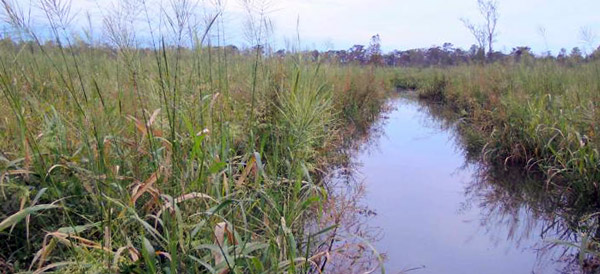
Wild rice growing in anaerobic conditions due to bacteria living in the mud in which they are rooted, paddy fields produce lots of methane and sulfur compounds due to their anaerobic bacteria
Anaerobic respiration - fungi (yeast)
Another important occurrence of anaerobic respiration occurs in yeast (a unicellular fungus), it is just as inefficient a use of energy as that shown above in animals, it is important because the two waste products are alcohol (ethanol) and carbon dioxide.
Glucose > Ethanol
+ Carbon dioxide
+ Energy (2 ATPs)
We use the carbon dioxide to make bread and other bakery products rise and the alcohol for drinks, though it also has important other uses such as making vinegar and bioethanol. Unfortunately for yeast, the ethanol it produces poisons it at levels from 3% to about 20% depending on the type of yeast used.
More exotic anaerobic respiration is carried out by various kinds of bacteria. These use a variety of substances that they feed on to generate energy, in the process releasing waste products such as methane, sulfides, iron, nitrite and even forms of manganese, cobalt and uranium. Each type of bacteria is a specialist in its own substance and they may be very important in the recycling of nutrients and changing conditions where they live for themselves and other organisms.
Bacterial anaerobic respiration is also used in the process of silage making for cattle feed and in biodigesters to produce gas as a biofuel.
Physiological Respiration
This is the bulk transport of oxygen from the outside environment to the body cells where it is used to liberate energy from food in cell respiration and also the removal of carbon dioxide, the waste product from the body to the outside environment. Carbon dioxide is toxic in moderately high levels and must be removed from the body if the cells are to function properly.
Our breathing and heart rate during exercise isn't regulated by our need for oxygen as you might expect, but by the build up of carbon dioxide in the blood. Receptors in the brain detect if CO2 is increasing in the blood and increase the heart and breathing rates to clear it.
Physiological respiration involves two processes, the pumping of blood around the body by the heart and the exchange of gases (oxygen in, carbon dioxide out) involving specialized organs which in humans are the lungs, though in many other animals can be gills.

